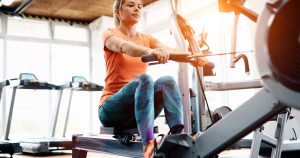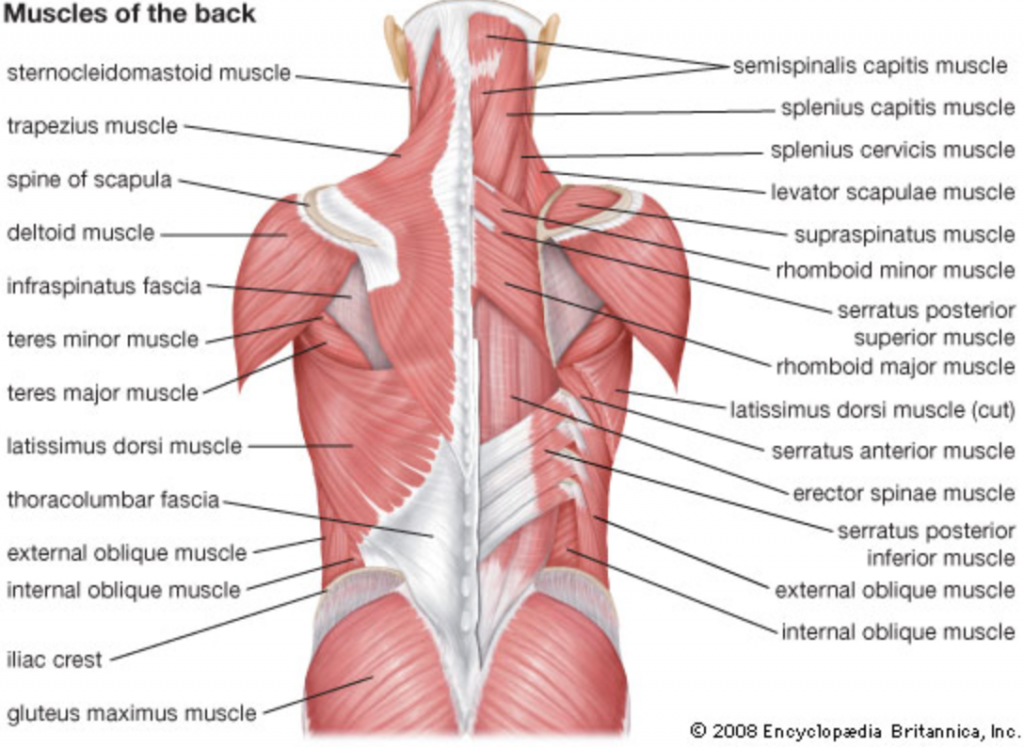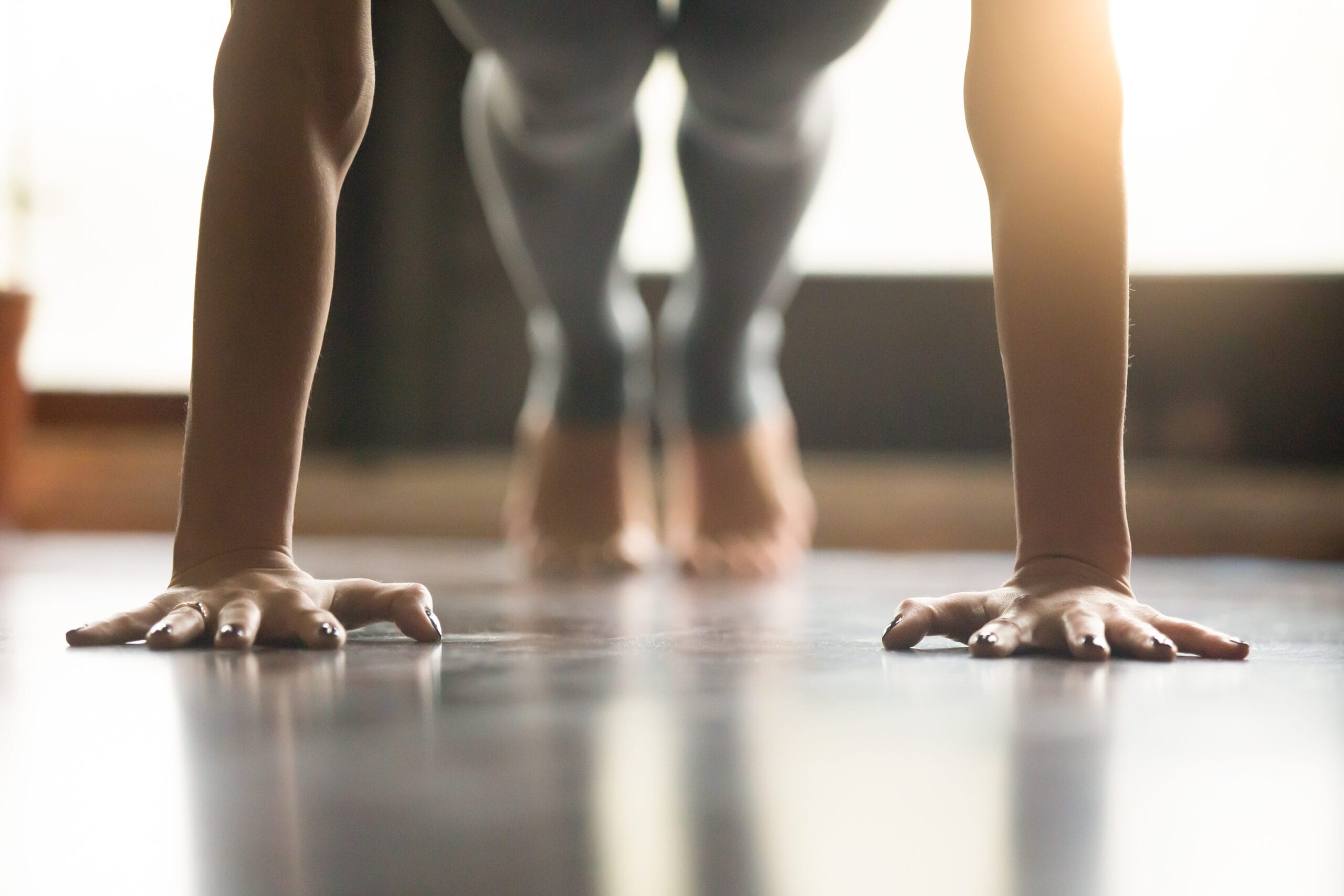
Jumping on a rower and getting a great workout seems easy enough, but it’s a good idea to learn how to use a rowing machine properly first to ensure you don’t hurt yourself. Rowing machines offer great cardiovascular and strengthening exercise, but if done incorrectly, you can easily strain muscles in your back, shoulders, and hips. I’m here to make sure you get the most out of your rowing experience without causing any unneccesary discomfort.
Let’s talk a little anatomy first, it’s always good to know what you are exercising when you exercise.
Why Row?
Rowing is fairly unique in the fact that it offers a total body workout. Most cardio machines do not. Think about it. Treadmills are awesome, but they only target your legs. Ellipticals, stationary bikes (unless you are using a fan bike), stair masters- all legs. Some ellipticals let you push and pull a little with your arms, but who ever felt sore in their arms after using an elliptical?
Rowing offers a great combination of upper body, lower body, and core involvement during one fairly simple move. The good news is, the more muscles you use during exercise, the more calories you burn. Anytime we can burn more calories, it’s a good thing.
Rowing is great at burning calories, in fact, it’s been estimated that a 185 lb person burns about 10 calories/min rowing at a moderate pace (see resource here).
Back to the muscles. Which muscles are we working when we row? It might be easier to list the muscles we aren’t using…

- Legs- gastrocnemius, soleus, quads, hamstrings, glutes
- Core- Erector spinae, lats, rhomboids, rectus abdominus, obliques
- Arms- deltoids, biceps, triceps, wrist extensors and flexors, pecs, trapezius
And guys, these are just the big muscles. Think about all the other smaller, postural muscles in our neck and spine that weren’t mentioned. The point is, rowing almost literally works every muscle in your body at the same time. As you can see from the rough list above, every major muscle group in the arms, legs, and back was listed.
Working all these muscles, with one exercise, for any given time limit is going to get your heart rate up. Sustaining this is going to give you one heck of a cardiovascular workout. This is the main reason people row, for the cardiovascular benefit.
But rowing can also really improve total body strength. Especially if you do intervals or short bouts of intense pulling. With time, this will significantly increase your back and leg strength. Having a stronger back and legs makes you more durable in the real world and less likely to injure self during real world activities- lifting, pushing, pulling, etc.
Another great benefit of using a rowing machine is the fact that rowing is a very low-impact exercise (if done correctly). With a nice rowing machine, the seat glides smoothly and the pull is nice and fluid- this all equates to minimal stress through your joints. The more comfortable your exercise is, the more likely you are to continue exercise regularly.
You have to be careful with your back and knees. Flexing your back too far or hyperextending your knees will not feel good. But if done with correct form, rowing can offer a very comfortable form of exercise for your entire body.
Additionally, for those of you who like to workout at home, rowing machines have become increasingly popular for home use. Many are light weight and portable. For a full length rowing machine, you only need an area of about 8’x2′ to use comfortably.
Surprisingly, rowers are also some of the most affordable exercise machines around. Especially when compared to treadmills and high end spin bikes.
For example, the most popular rowing machine on the planet costs about half the price of a nice treadmill.
If you would like to learn more about the best rowing machines available, click here.
How To Use A Rowing Machine Properly
We know rowing is great because of the total body workout, but we need to make sure we are doing it safely. With all of the muscles being worked, it can be easy to strain one or more of them while rowing.
The most common injury while rowing is a low back strain (pulled muscle). This makes sense due to all of the work the low back is doing during this exercise. Other common injuries include knee pain, neck strains, and wrist problems.

- Enter machine, strap feet into footplates snuggly
- Bend knees and lean forward to reach handle, grip lightly.
- Push with legs first, keeping your back flexed forward until knees are straight (don’t completely extend, keep a little bend to decrease chance of injury)
- As your knees straighten, start leaning back a little so that your trunk is a little reclined
- As you lean back, start bending your elbows to pull handle toward your chest
This is first half of movement, now we just reverse the movement to get back
- Straighten arms first
- Bend forward slightly so trunk is now flexed forward
- Bend knees as you slide seat toward machine and handle returns
- Repeat entire process
When you are sliding the seat out from the machine, or pulling the handle, remember the sequence:
Legs –> Back –> Arms
When you are sliding the seat back to the machine, or returning the handle back, remember the opposite:
Arms –> Back –> Legs
I know, words are ok, but a picture is worth a thousand words. Luckily, there is an awesome video tutorial on youtube, check it out here to make sure you this makes sense.
Rowing Tips
If you are new to using a rowing machine, follow these tips to reduce chance of injury and get the most out of your workout:
- Start slowly- make sure the movement is comfortable for all of your joints before you speed the movement up
- Start with low resistance- especially during your first couple workouts, keep the resistance low and gradually bump it up once you have mastered the technique
- Gradually increase your workout time- like any other exercise, you need to gradually build yourself up for longer workouts. Start at 5-10 min and gradually work up to 30 min when you know your body can handle it. You could try adding 5 min a week.
- Do not hyperextend your knees- keep a few degrees of bend in your knees when you start leaning your trunk back
- Don’t shrug your shoulders, keep them low and relaxed
- Try to maintain good upright posture, your low back should stay pretty straight- bend at the hip
- Don’t hit the seat into your feet, it doesn’t feel good and it’s no good for your knees!
- Keep breathing- see if you can time it so you exhale when extending back, inhale as you slide forward
Time To Get Rowing
That about does it. Now you know how to use a rowing machine properly. Regardless if you have your own rower in your home or if you are rowing at the local gym, I’m sure you will be doing it correctly now. You may even find yourself critiquing others. If you see someone doing it incorrectly, you may want to give them a helpful tip.
I hope you found this information helpful. If you have any questions, leave a comment and I’ll get right back to ya. Happy rowing!



Very good tips … better than what books and the machine manual gave …. made it simple to follow for me …. many thanks
great, glad it was helpful.